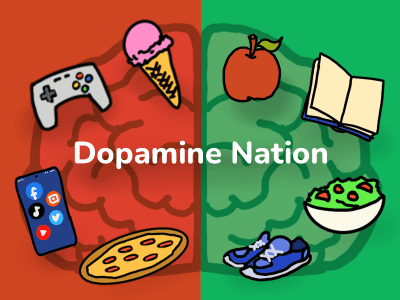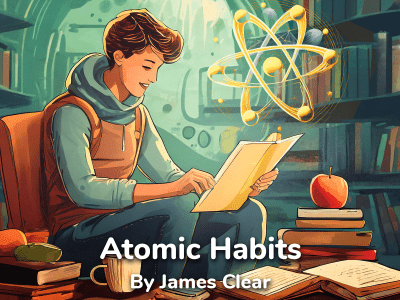Who is Bessel van der Kolk?

Bessel van der Kolk is Professor of Psychiatry at the Boston University School of Medicine. He’s been researching trauma for over 30 years and has published over 150 peer-reviewed science papers. He also founded the renowned Trauma Center in Brookline Massachusetts 35 years ago, which has treated thousands of traumatized adults and children.
Basically, he knows what he’s talking about.
Now, you don’t need to be a therapist or a traumatized war veteran to benefit from this book. Van der Kolk says trauma is far more widespread than we’ve thought. Many people experience childhood developmental trauma while growing up. In this book, he explains exciting new scientific treatments for trauma and emotional healing that go beyond traditional talk therapy or pharmaceutical drugs.
1. Trauma dramatically changes a combat veteran’s brain, behavior and life
At the beginning of his career, Bessel Van der Kolk worked in a Veterans Affairs clinic. He began seeing many patients who had recently fought in the Vietnam War.
Veterans came into the clinic and told him of the bizarre symptoms they were experiencing:
- They had flashbacks. In the middle of their day, they would suddenly relive a horrific memory from the war. One man said he was looking after his baby and when it started crying he suddenly relived the images and sounds of burned and mutilated children he had seen in Vietnam.
- They often couldn’t their impulses. Many veterans had violent emotional swings. They had uncontrollable tempers which terrified their families and themselves. In the Veterans Affairs building, they often left holes in the drywall.
- They engaged in substance abuse and risky behaviors. To avoid facing the pain or shame around what happened in Vietnam, they turned to alcohol and drugs. They also sought out dangerous highs like speeding on a motorcycle.
- Their emotions were blocked. They couldn’t feel much love or involvement towards their family and friends.
Today Post-Traumatic Stress Disorder (or PTSD for short) is a well-recognized mental health diagnosis. But in the 1970s the situation was much different. At the time, the word PTSD didn’t exist, but Van der Kolk had heard of soldiers suffering from war neurosis or shell shock. Surprisingly, the library at the Veterans Affairs clinic did not have a single book on any of these topics!

So the veterans were usually diagnosed with depression or substance abuse or a number of other disorders. Van der Kolk believed these diagnoses were not very useful because they described the symptoms, while ignoring the trauma that was the cause of the symptoms.
It was only in 1980 that the diagnosis for PTSD was made official. What was so important about having a diagnosis?
- It communicates the fact that PTSD is not a sign of weakness in a soldier, but a real physical disorder in their brain.
- It allows patients to get the right treatments that address the cause of their suffering and not just the symptoms.
- It allows more research to be focused on the area of post-traumatic stress. Over the last 30 years, the US Department of Defense and the Department of Veterans Affairs have spent hundreds of millions of dollars on PTSD research. Before having a clear diagnosis, it was hard to get funding.
Working at a Veterans Affairs clinic, Van der Kolk saw many former soldiers had strange problems with memory flashbacks, impulse control and emotional blocks. PTSD was made an official diagnosis only in 1980, which allowed these veterans to get the right treatment for their trauma.
2. Trauma also affects the general population far more than we thought
In 1982, Bessel Van der Kolk began working at the Massachusetts Mental Health Center, a hospital where Harvard trains future doctors.
His new patients were no longer combat veterans. They had been diagnosed with depression, anxiety, bipolar and other disorders. Yet Van der Kolk saw symptoms of trauma in them that were all too familiar. He began to wonder if trauma was the true cause of much of their mental suffering.
Research into Adverse Childhood Experiences
In 1995, a large study of over 17,000 people was done to gather data about the effects of adverse childhood experiences. This is now known as the ACE Study for short. It’s considered very influential in the world of psychiatry. The ACE Study found a surprisingly high percentage of people go through traumatizing childhood experiences.
Research by the Centers for Disease Control and Prevention has shown that one in five Americans was sexually molested as a child; one in four was beaten by a parent to the point of a mark being left on their body; and one in three couples engages in physical violence. A quarter of us grew up with alcoholic relatives, and one out of eight witnessed their mother being beaten or hit.
The ACE study found that the more adverse childhood experiences someone had, the greater their risk for attention problems, chronic depression, alcohol abuse and suicide attempts.
For example, people who reported at least four adverse childhood experiences were seven times more likely to say they were an alcoholic, compared to people with zero experiences. They also found a correlation between having these adverse childhood experiences and later having financial problems and being involved with domestic or sexual violence.
Attachment Theory
Taking a step back, many children may not have a caregiver who is overtly abusive, but they are physically absent, emotionally neglectful or out-of-sync with their child.
In the 1950s, psychiatrist John Bowlby noticed that infants who were separated from their mothers in hospital for a long time were more likely to die. At the time, it was normal for hospitals to restrict parents from visiting their children, often to one hour per week. Bowlby showed how distressing this parental deprivation was to children, and policies around hospital visits changed.

These early discoveries grew into Attachment Theory. It’s obvious that a small child is very focused on their caregiver, the person they are totally dependent on for survival. Research shows that if the caregiver is not emotionally attuned to their child, if they do not respond to their crying or pleading, or if they leave for extended periods of time, then this can disrupt the formation of a secure attachment bond between the caregiver and the child.
Attachment Theory also says children develop alternate coping styles attempting to get the best care they can from their out-of-sync caregivers. They become either overly anxious for connection or avoidant of it altogether. So this first critical relationship with your primary caregiver becomes an inner emotional map that can shape many of your adult relationships.
Tragically, many children do not have anyone they feel safe around. They don’t have an adult they can rely on as a secure base from which to explore the world. There is a connection here with trauma, people with a disrupted attachment style don’t feel safe in their body and don’t feel people can be trusted for emotional support.
No Diagnosis, No Treatment
For decades, Bessel van der Kolk has been trying to create a new official diagnosis for victims of interpersonal trauma and neglect. In both 1994 and 2009, he worked with groups of trauma experts to recommend a new more general trauma diagnosis be included in the DSM book, the bible of psychiatry. Both times their recommendations were rejected.
The situation is similar to PTSD 50 years ago. Without a diagnosis available for childhood or interpersonal trauma, patients must instead be diagnosed with a variety of other disorders, from depression to anxiety to bipolar to attention disorders. At worst, these labels only describe the surface-level symptoms they are experiencing, while neglecting the underlying cause. This means patients cannot receive effective treatment for their trauma. (It would be like a doctor diagnosing you with a skin bump rather than a cancer tumour.) The focus of treatment often becomes controlling patients external behavior with medication or whatever therapy is currently favoured.
Later on, Van der Kolk saw familiar signs of trauma in his general patients who’d been diagnosed with depression, anxiety, etc. Research now shows adverse childhood experiences of abuse or neglect affect many people well into adulthood. But this developmental trauma is not yet an official diagnosis which makes it hard to treat.
3. A traumatized brain is stuck in either fight-or-flight or shut-down mode
Many studies have shown trauma causes actual changes in the brain. After someone survives a life-threatening situation, their brain functions differently.
In a part of our brain called the amygdala, we all have an alarm system called the fight-or-flight response. It’s usually a positive thing, putting your body on high alert so you can survive potential danger. When the danger passes, the stress hormones are flushed out of your body.
However, when someone has been traumatized, this alarm system becomes overly sensitive to signs of danger. At the slightest hint, the brain and body is flooded with stress hormones, causing bewildering changes to how someone feels and reacts. In the long term, the constant stress hormones can cause many physical health problems.
The stress hormones of traumatized people, in contrast, take much longer to return to baseline and spike quickly and disproportionately in response to mildly stressful stimuli.
By the way, if you want to understand the science of how the human brain works, one of the best teachers is Stanford Professor Robert Sapolsky. In his book Behave, he explains human behavior through neurons, hormones, genes, childhood development and more. If that interests you, then go read our summary of his book Behave by Robert Sapolsky.
Trauma can hijack someone’s imagination, forcing them to stressfully relive the trauma again and again. These are called “flashbacks.” Studies show during a PTSD flashback, the same brain regions are activated as during the initial trauma. They are not just remembering what happened, they are reliving it as if it’s happening now. For example, some combat veterans feel intensely distressed hearing fireworks because the sound brings them back to the gunshots they heard during combat.
Can you imagine that? Reliving terrifying scenes while shopping in the supermarket or trying to live a normal life.
There is also one last emergency system. If there’s no way for someone to escape danger, then their body activates something called the dorsal vagal complex. This makes them freeze, shut down or collapse. Long after the trauma, their body can still remain frozen or collapsed. Victims of child abuse are often very physically tense and they are unable to make eye contact. Van der Kolk can immediately know who is a trauma patient in a clinic just by looking at their body language.
Trauma causes the amygdala, the alarm system in the brain, to become overly sensitive to potential danger. For people with PTSD, this causes a chronic stress reaction and flashbacks. If someone cannot escape a traumatic situation, their body freezes or shuts down, maybe even long-term.
4. Traditional therapy and medications are often ineffective at treating trauma
Over 100 years ago, Sigmund Freud and his mentor Josef Breuer published the exciting discovery that talking can release stuck emotions. This was called the “talking cure.”
Although Freud’s psychoanalysis is not widely practiced anymore, the basic idea that talking about negative emotions will resolve them continues to live on. Explaining in detail the story of what you’re preoccupied about to your therapist is a core part of most therapies today, including the most popular one called Cognitive Behavioral Therapy.
However, when the source of distress is past trauma then talking about it alone may not help much. The largest study testing Cognitive Behavioral Therapy for PTSD produced poor results. After 3 months of treatment, only 15 percent of patients no longer had PTSD symptoms. One-third of patients dropped out of the study.
It’s definitely not a great result when one out of three people can’t stand to finish the treatment!
While that kind of therapy based on exposure is great for some mental health disorders, it is often not the right tool for trauma. Van der Kolk says the problem is that talking takes place in the rational part of our brain, while the stress response happens in a deeper emotional part of our brain. (An oversimplification, but basically true.) For example, just because someone learns their childhood abuse is causing their depression, that knowledge alone won’t cure the trauma.

No matter how much insight and understanding we develop, the rational brain is basically impotent to talk the emotional brain out of its own reality.
If someone wants their emotional brain to calm down and stop flooding their body with stress hormones, then they will need to learn different methods that can reach their emotional brain. Therefore the focus of trauma therapy needs to be helping the patient feel safe in their body and live more in the present moment rather than being pulled back into the past. Van der Kolk calls this “limbic system therapy.”
The pharmaceutical drug revolution
In the 1970s there was a revolution in psychiatry. Mental health problems started to be seen as chemical imbalances that could be fixed with the right medications.
Indeed, pharmaceutical drugs helped a lot of people. From the 1950s to the 1990s, the number of people living in mental hospitals in the US went from over 500,000 to less than 100,000. Van der Kolk says this was largely thanks to antipsychotic drugs which allowed so many people re-enter the general society.
For trauma patients, the results were mixed. Some data suggested animals with higher serotonin levels in their brains had a less reactive amygdala. So Van der Kolk decided to try giving Prozac to a few of his patients, a drug that promised to increase available serotonin. After some promising anecdotal reports, he conducted a larger study comparing Prozac to a sugar pill. They did find Prozac gave a significant improvement in symptoms for many of their patients at the Trauma Clinic. But for some unknown reason, it did not help combat veterans at all.
Psychiatric drugs have helped many people and in some cases they are a lifesaver. Van der Kolk still prescribes them to his patients as part of their treatment. However, he says the pharmaceutical revolution may have done “as much harm as good.” Why?
- While drugs can dampen symptoms of mental distress, they don’t treat the underlying trauma. This means when someone stops taking them, they relapse.
- The idea that mental health issues are caused by a chemical imbalance has become widely accepted, which has discouraged funding into non-drug treatments.
- And when everyone believes mental distress arises from a chemical imbalance coming from within a person, we become blind to the fact that so much suffering is socially caused. From neighbourhood violence, to physical abuse or parents who are inattentive because of financial stress.
Talk therapy that gives someone insight into their mental distress may not relieve the distress. Because the stress response is found not in the rational brain, but the deeper emotional brain. Medications can be a lifesaver, but they can’t heal the trauma causing the symptoms, so they should be used in addition to other treatments.
5. Mindfulness is an essential skill for restoring control over one’s life
In 2004, Dr. Ruth Lanius looked at the brains of 34 severely traumatized people using an MRI scanner. What she discovered was startling. When “normal” people have their brains scanned, they typically have activity happening in a line down the middle of their brains, a region called the Default Mode Network. This part of the brain lets us feel self aware, including being aware of sensations in our body. However, in the traumatized people there was far less activity in this region.
Traumatized people chronically feel unsafe inside their bodies: The past is alive in the form of gnawing interior discomfort. Their bodies are constantly bombarded by visceral warning signs, and, in an attempt to control these processes, they often become expert at ignoring their gut feelings and in numbing awareness of what is played out inside. They learn to hide from their selves.
The foundation of being control of ourselves is being aware of what’s happening inside ourselves. This is an ability scientists call interoception. If we are not aware of inner physical sensations until they become unbearable, then we must rely on external ways of regulating those emotions, by using medications, alcohol, drugs, food, compulsive behaviors and addictions.
Van der Kolk says many trauma patients have a condition called alexithymia, which means they cannot feel or describe their own emotions. So his first steps when working with a new trauma patient is to help them get in touch with physical sensations in their body. He calls this mindfulness, being aware of what they’re feeling in the moment, whether that is tension in a shoulder, coldness in their hands or a pressure in their leg.
When a patient is sharing something painful or difficult, then Van der Kolk will often ask them to pause and feel what they’re feeling inside their body. He says the most important phrase in trauma therapy is “notice that,” which shifts their focus to what is happening inside them.
While revisiting a past trauma, it is important a patient remain “grounded.” This means connected to physical sensations like feeling their feet on the ground. By remaining in the present, breathing calmly and remaining physically relaxed, their emotional brain can learn that the trauma belongs in the past.
The author Eckhart Tolle introduced a generation of western people to the practice of mindfulness. In his very popular book The Power of Now, he used direct, simple language to explain how to escape the endless chatter in our minds, which causes an immediate improvement to our mental well-being. So if you want to learn how live more mindfully and be in the present, then go read our summary of The Power of Now by Eckhart Tolle.
Another way patients can stay grounded is by tapping specific acupressure points on their body with their fingers. This is closely related to acupuncture and is often taught under the name Emotional Freedom Technique (EFT).
Recently some therapies based on body awareness have shown powerful results. This includes somatic experiencing developed by Peter Levine, and sensorimotor psychotherapy by Pat Ogden. Both are focused on accessing internal physical sensations of trauma rather than telling the story of what happened.
Traumatized people have less activity in the part of the brain related to self awareness. The first step of trauma therapy is helping them become more aware of sensations inside their body, a skill Van der Kolk labels mindfulness. If a patient can remain mindful and relaxed while recalling a trauma, their emotional brain can begin to see it as past.
6. “Top-down” mental regulation can retrain our emotional brain
Our brain has effective ways of regulating its own emotional impulses. This often happens through a part of the brain located near your forehead called the medial prefrontal cortex. Van der Kolk calls this the “watchtower” of our mind, allowing us to step back from the turmoil happening inside. Brains scans show that seconds after the amygdala activates fear, the medial prefrontal cortex activates to quiet down the emotional reaction.
Practicing mindfulness strengthens our medial prefrontal cortex, one reason why it’s so important for trauma therapy. Van der Kolk says it is a “top-down” way of training our emotional brain.
Neurofeedback
Another effective top-down way to strengthen our brain against trauma patterns is called neurofeedback. The brains of traumatized people are measured to stay in a different electrical frequency than normal people, this is why they have difficulty concentrating and focusing. Neurofeedback allows someone to learn how to keep their brain in a calm and focused frequency.
According to studies, neurofeedback training improves performance in sports and music. A scientific review of 36 studies found it as effective as conventional drugs for treating ADHD. And back in 1991, a small study by Penison and Kulkosky found significant and long-term improvements in PTSD symptoms for 15 Vietnam veterans. This study was later replicated multiple times. Neurofeedback is now used as a treatment in some military facilities for PTSD and Van der Kolk uses it to help his patients control symptoms of developmental trauma.
What exactly does neurofeedback look like? To find out, Van der Kolk went to the office of a specialist named Sebern Fisher. She put three electrodes on his head to measure brainwave frequencies, connected to her computer. The computer turned the brainwaves into what looked like a video game involving spaceships. If Van der Kolk made himself calm and focused, then his spaceship would start winning the game. But if he became distracted, then his spaceship would fall behind. So a patient gets immediate direct feedback whether their mind is in the right frequency, and they can train themselves to stay focused longer.
Internal Family Systems Therapy
Another type of therapy we don’t really have time to cover in this summary is called Internal Family Systems (IFS) Therapy. This therapy helps reduce negative emotional patterns and self destructive tendencies people often develop to cope with trauma. During IFS therapy, you learn to recognize there exist individual separate members inside yourself like an inner family. When you can compassionately understand the purpose behind each member, then you can create a stronger sense of mindful self leadership.
Mindfulness strengthens a part of our brain called the medial prefrontal cortex, which can rein in the impulses of our emotional brain. Neurofeedback therapy is a different way someone can train their brain to remain in frequencies that are calm and focused. It has shown great results for PTSD and ADHD.
7. “Bottom-up” body-based practices can also retrain our stress responses
We can also heal our emotional brains from the bottom up. The vagus nerve is the longest nerve that connects your brain with the rest of your body. And fascinatingly, about 80% of its fibres run from the body to the brain. This means we can use our body as the bridge to communicate with our emotional mind, allowing us to retrain our threat detection system.
For thousands of years, cultures around the world have promoted practices like Yoga in India, Tai Chi in China or communal drumming in Africa. Modern psychiatry is beginning to recognize the deep benefits of body-based practices centred around breathing, movement, chanting and touch.
For example, yoga is very popular today. Not only is it about body postures, but in most yoga schools breathing and mindfulness are very important. This is meaningful because exhaling out slowly activates something called the parasympathetic nervous system in your body, which quiets the fight-or-flight response.
Studies have shown that a regular yoga practice improves symptoms of anxiety, depression, stress, anger and even physical health issues like high blood pressure and lower back pain. In 2014, Van der Kolk published research showing that 10 weeks of yoga reduced PTSD symptoms for women who had not responded to medication or other treatments. Yoga classes have became a core part of their Trauma Center.
Another example is touch. A fundamental way people comfort each other is through touch. It’s hard to imagine a mother calming down her crying child without touch. And it’s a fact that many trauma patients report positive benefits from therapeutic massages.
The vagus nerve allows our body to communicate with our emotional brain through breathing, movement, chanting and touch. Yoga, therapeutic massage and practices such as Tai Chi all show benefits reducing traumatic stress symptoms.
8. Restoring feelings of social connectedness is vital for healing
When people need to process a strong experience like losing a loved one, where do they go? They generally seek comfort with their friends, family and religious community. Many studies show a good social support network is essential for emotional well being.
Being able to feel safe with other people is probably the single most important aspect of mental health; safe connections are fundamental to meaningful and satisfying lives.
However, accessing this natural source of healing can itself be a huge challenge for traumatized people. Traumatized people are often shut off from relationships, can’t trust anyone and sometimes can barely engage with people.
The problem is, these relational blocks aren’t fixed simply by understanding where they came from. Just because you know that your fear of intimacy was caused by childhood abuse, doesn’t suddenly heal your inner emotional map. But our inner maps CAN be healed through new experiences of human attunement, rhythm and reciprocity.

Here are a few ways that work:
- Psychotherapy. A good therapist creates a relationship where the patient feels comfortable and safe, including safety from being shamed or judged. It may be the first time the patient feels truly seen and heard by another person. This foundation of human attunement can help the patient build courage to tolerate painful sensations and face the reality of what happened.
- Animal-Assisted Therapy. When someone cannot feel safe or calm enough around any person, they can start by interacting with animals like dogs or horses, which are becoming more widely used in trauma programs.
- Support groups. Many who have been through extreme experiences like war or violent crime find comfort among people who share similar experiences. For example, there are many groups for combat veterans, alcoholics or kids of alcoholics.
- Communal music or movement. The typical feeling of trauma is being frozen and cut off from others. Activities that require mutual cooperation and rhythmic action can break those old patterns. That’s why many trauma patients report benefits from joining a choir group, learning to dance or doing martial arts. This may also be the deep intuitive reason why most popular religious traditions involve group singing and prayer.
- Theatre. A traumatized person often feels numb, disconnected or dissociated from their own emotions. Performing in theatre requires moving past this block. Acting is about connecting with an inner emotion, then expressing it through the body. Relearning this skill in a “make believe” environment generally translates well to real life. Therapeutic drama programs are becoming more common.
Reconnecting with others is how most humans heal, but this can be a unique challenge for traumatized people who have been abused, neglected or betrayed by others. Their emotional maps can be reshaped through practices like psychotherapy, animal-assisted therapy, support groups or group activities like singing, dancing, theatre, martial arts or religious practices.
9. EMDR eye-movement therapy is surprisingly effective for processing traumatic memories
EMDR is short for Eye Movement Desensitization and Reprocessing. On the surface, EMDR sounds like a very simple process. Almost too simple to work. The therapist sits in front of the patient and asks them to recall the trauma. Then the therapist moves their hand side to side in front of the patient’s eyes. If the patient becomes distressed, the therapist may direct them to breathe or notice what’s happening inside.
Unlike other therapies, sharing the past story of what happened is not essential. Van der Kolk has given EMDR sessions to people who spoke different languages than him. He could only speak a couple of key phrases in their language.
When Van der Kolk first heard about this therapy, he thought it was wacky! I’m sure most of us would! But after hearing some amazing stories directly from trauma patients, he was trained in EMDR. Soon his own patients were reporting great results from this therapy.
EMDR has shown very good results treating PTSD. In one of Van der Kolk’s studies, EMDR worked much better than either Prozac or a placebo for decreasing PTSD symptoms. After 8 EMDR sessions, 25% of subjects appeared to be cured of PTSD symptoms. Yet the biggest change was in long term outcomes. 8 months after the treatment, those who received EMDR continued to improve with 60% being scored as completely cured. But those who took Prozac lost their improvements after they stopped taking it.
On its own, remembering a traumatic memory does not seem to help resolve it, so somehow the eye movement makes the difference. During EMDR sessions, Van der Kolk often notices that randomly associated memories come up for his patients. Like a women will be remembering a violent assault, then a minute later she’s reliving a positive experience from her karate class. Some scientists guess EMDR helps create new connections between traumatic imprints and other past memories. This helps patients feel the trauma exists in their past rather than threatening their safety in the present.
There may also be a connection between EMDR and sleep. In particular, there is a phase of sleep called Rapid Eye Movement or REM sleep. During this phase, our eyes move rapidly and our brain forms new connections between distant memories.
In his book Why We Sleep, Stanford Professor Matthew Walker explains how REM sleep provides a form of emotional therapy. He shares a study by Dr. Cartwright who found that her clinically depressed patients who dreamt about the source of their distress were more likely to come out of depression one year later. By contrast, her patients who didn’t dream about whatever was disturbing them didn’t improve as quickly. If you want to learn more about the science of sleep and how to improve your sleep habits, then go read our summary of Why We Sleep by Matthew Walker.
In EMDR therapy, a patient recalls a traumatic memory while their eyes follow the therapists hand, which is moving from side to side. It sounds unusual, but studies show EMDR works very well for treating PTSD and other traumas.
Conclusion
As a big lover of psychology, I thought this book was fantastic. The author basically told the story of how our understanding of trauma has jumped forward in the past 50 years. When he first began treating patients, the diagnosis of PTSD didn’t exist! But today there are all kinds of promising new treatments being tested.
Whether you’re a therapist, a trauma patient, someone looking for direction in your emotional healing journey or anyone else… I hope you learned some useful things in this book note. And I’ll see you in the next one!



















Community Notes